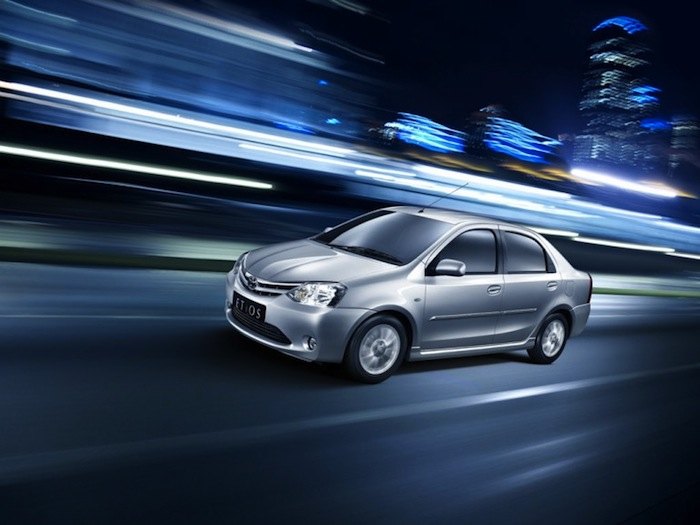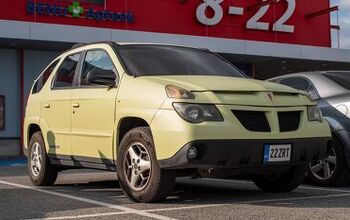Review And Talk With The Head Engineer: Toyota Etios, BRIC Spec

On December 1, a B-sized sedan went on sale in India without a single car in the showroom. It is called the Etios, it is made by Toyota, and sight unseen, it already received 12,000 pre-orders as of today. Production of the Etios will start on December 20 in Toyota’s factory near Bangalore, India. Boring story so far?
While in Toyko for the rest of the year, I had a chance today to talk to Toyota’s lead engineer of the Etios, Yoshinori Noritake. And a much bigger story emerged: Toyota is engineering and building new cars, made for the special demands and targeted at the world’s new growth markets. Developed markets may not apply.
Noritake is a soft-spoken, humble man.
“India is a competitive market,” says Noritake. “If we succeed in India, we can apply this in other markets as well.”
Noritake and his “BRIC” team of engineers studied India well before they designed this car. He describes India as a country with often narrow and bad roads, where people “lack driving manners”, where there is “intense competition at the traffic lights” and where “goats, cows, bicyclists and more coexist on the roads with cars that often have no rearview mirrors.”
He reports of “sometimes 8 people in a car” and “a number of other people that attach themselves to the outside of the car.”
He doesn’t say it, but he clearly indicates that in his mind, something like the Nano is not the right car for India. “People aspire to a real sedan with room for the family. They tell us they would like a Toyota, but our price is much too high.”
So Noritake and his team built a car from the ground up for the harsh roads, for the demanding passenger load, and at a price Toyota hopes the Indians will be able to afford.
The Etios is an amazingly roomy B-Class car, with a cavernous 595 liter trunk, and room for five. A lot of room for five. “You know, Indians are kind of big, at least compared to us Japanese,” says Noritake, and muses that the reason might be the menu based on oily curry. But indeed, the backseats of the Etios offer legroom otherwise found in a long version so popular in China.
And speaking of legs, “people in India often sit barefoot in the car.” Therefore, the metal underpinnings of the front seats have been armored with plastic coating to avoid injury of shoeless feet.
Toyota’s BRIC team truly sweated the development of the car. They drove prototypes for 200,000 kilometers (125,000 miles) on all kinds of roads in India and soon decided that the Etios needs the strongest A/C as standard equipment, with a galeforce airflow, preferably at full blast into the face of driver and passengers. The A/C is augmented by clean air filters to protect the passengers from third world dust.
“The dust in India is tremendous,” recalls Noritake, and a shudder goes through his lithe body. “You want to keep watered–up all the time.” Seven cup holders, make that seven one liter bottle holders were distributed to strategic points within the vehicle. Toyota punched a hole with a bezel into the wall that separates the glove compartment from the A/C duct: Bingo, a refrigerated glove compartment. Did I say “glove compartment?” This 13 liter deep carmoire keeps a healthy number of one liter bottles cool and protects a large shopping bag from prying eyes when the car is parked.
At the outside, the car sports a 170mm (6.7 inch) ground clearance, quite the standard (and necessary) for Indian roads. However, instead of jacking up existing models, that ground clearance is built-in. And it wasn’t enough: During their 200,000 km endurance race through India, debris on the road killed some essential lines at the bottom of the car. The production model received underbody-armor.
More improvements were inspired by firsthand experience: During the monsoon, Noritake and team were soaked when walking up to the car. Cellphone and keyfob died. The Etios production keyfob is now waterproof. As long as your cellphone doesn’t come from Noritake’s team, keep it in a Ziploc® bag during the Indian monsoon season.
The Etios is powered by a newly developed 1.5 liter 16 valve DOHC engine that produces 90 hp and has a torque of 132 Nm to give you an edge in the competition at the traffic lights. The transmission is a 5 speed stick.
Now for the price of the car Toyota hopes people will be able to afford. Well, it’s no Nano. The following prices were converted from rupees to yen by Noritake, and then to dollars by me, so please no discussion about purchasing power. Prices start at a little over $10,000 for the base, or “J” model, and go up to $14,300 for the “VX” model. There are two other trim levels (“G” and “V”) in-between.
“Naturally, this car is not just for India, but for other markets too,” says Noritake. Toyota plans exports of the vehicle, and “naturally, the platform can be adapted to other markets as well.”
Noritake puts great emphasis on having the right car for the right market. “Toyota has a global standard for its cars. The local necessities take precedence over this global standard.” The car for India doesn’t have to start in Siberian winters. An Etios made for the R in BRIC possibly doesn’t need a galeforce A/C, but a stronger electrical system.
Is the car crashworthy? Noritake imparts the frightening news that India has no legal requirement for crash worthiness, but fear not, “we build the car to European crash standards.” He concedes that Euro-NCAP is complicated and in flux. “The Indian buyer may want to trade some airbags for space or lower price. In Europe, we’d probably need the full complement of airbags and a little work on the pedestrian protection.”
He doesn’t seem to be too keen on exporting the BRIC car to the developed markets anyway. When asked, he lowers his voice, says “I cannot comment – there could be a potential.” In other words: No. The BRIC car will remain a BRIC car first and foremost.
It’s a rugged car, but it’s not a street car in plaid clothing and faux wood. It hides its ruggedness under an elegant suit. The front seats are racing style bucket seats. A roomy $10,000 Toyota would be an easy sell in China, especially during those sandstorms. It would seat 5 beefy Russians in full winter gear. Most of all, it’s a real sedan, with a real and huge trunk, and that’s what people want when they have outgrown a cheap hatchback.
Toyota could be up to something with this car and further cars of that type. Other automakers used to ship previous gen tooling to emerging markets. Now, they just ship what sells at home, maybe adapted skindeep, or decontented. The BRIC car is nothing of that. It is not even available back home. It is built for and in the emerging markets. The Etios already has 70 percent local content, and when the engine is built locally in India in 2012, and the gearbox in 2013, only 10 percent of the parts will need to be imported, limited to “the ECU, some sensors and other small high reliability items,” says Noritake.
Not just the people would love such a car, governments and local industry would love it too.
Disclosure: The fare from Kamata to Iidabashi was put on my personal Suica card. Toyota paid for the coffee. The car was a preproduction prototype, photography verboten.

Bertel Schmitt comes back to journalism after taking a 35 year break in advertising and marketing. He ran and owned advertising agencies in Duesseldorf, Germany, and New York City. Volkswagen A.G. was Bertel's most important corporate account. Schmitt's advertising and marketing career touched many corners of the industry with a special focus on automotive products and services. Since 2004, he lives in Japan and China with his wife <a href="http://www.tomokoandbertel.com"> Tomoko </a>. Bertel Schmitt is a founding board member of the <a href="http://www.offshoresuperseries.com"> Offshore Super Series </a>, an American offshore powerboat racing organization. He is co-owner of the racing team Typhoon.
More by Bertel Schmitt
Latest Car Reviews
Read moreLatest Product Reviews
Read moreRecent Comments
- Jalop1991 does the odometer represent itself in an analog fashion? Will the numbers roll slowly and stop wherever, or do they just blink to the next number like any old boring modern car?
- MaintenanceCosts E34 535i may be, for my money, the most desirable BMW ever built. (It's either it or the E34 M5.) Skeptical of these mods but they might be worth undoing.
- Arthur Dailey What a load of cow patties from fat cat politicians, swilling at the trough of their rich backers. Business is all for `free markets` when it benefits them. But are very quick to hold their hands out for government tax credits, tax breaks or government contracts. And business executives are unwilling to limit their power over their workers. Business executives are trained to `divide and conquer` by pitting workers against each other for raises or promotions. As for the fat cat politicians what about legislating a living wage, so workers don't have to worry about holding down multiple jobs or begging for raises? And what about actually criminally charging those who hire people who are not legally illegible to work? Remember that it is business interests who regularly lobby for greater immigration. If you are a good and fair employer, your workers will never feel the need to speak to a union. And if you are not a good employer, then hopefully 'you get the union that you deserve'.
- 28-Cars-Later Finally, something possibly maybe worth buying.
- EBFlex The simple fact is very small and cheap ICE vehicles have a range thats longer than all EVs. That is the bar that needs met. And EVs cannot meet that.Of course range matters. But that's one element of many that make EVs completely ineffective at replacing ICE vehicles.



































Comments
Join the conversation
Enjoyed the write-up. BS and JB are fun to read. Regarding the car, did it have to be so damned unsightly? What's with the concave scalloping around the intersection of the A-pillar and the front fender? I guess Toyota was too embarrassed to share a picture of the rear with you. The Stateside Yaris looks so much better: and that's not even faint praise. >>>>Sigh
Great article! I have been to India and in order to understand the madness and what sort of vehicle perform well in it one does have to live there. it may not be pretty, but it sounds like they incorporated a lot of features that will make it perform well in India.